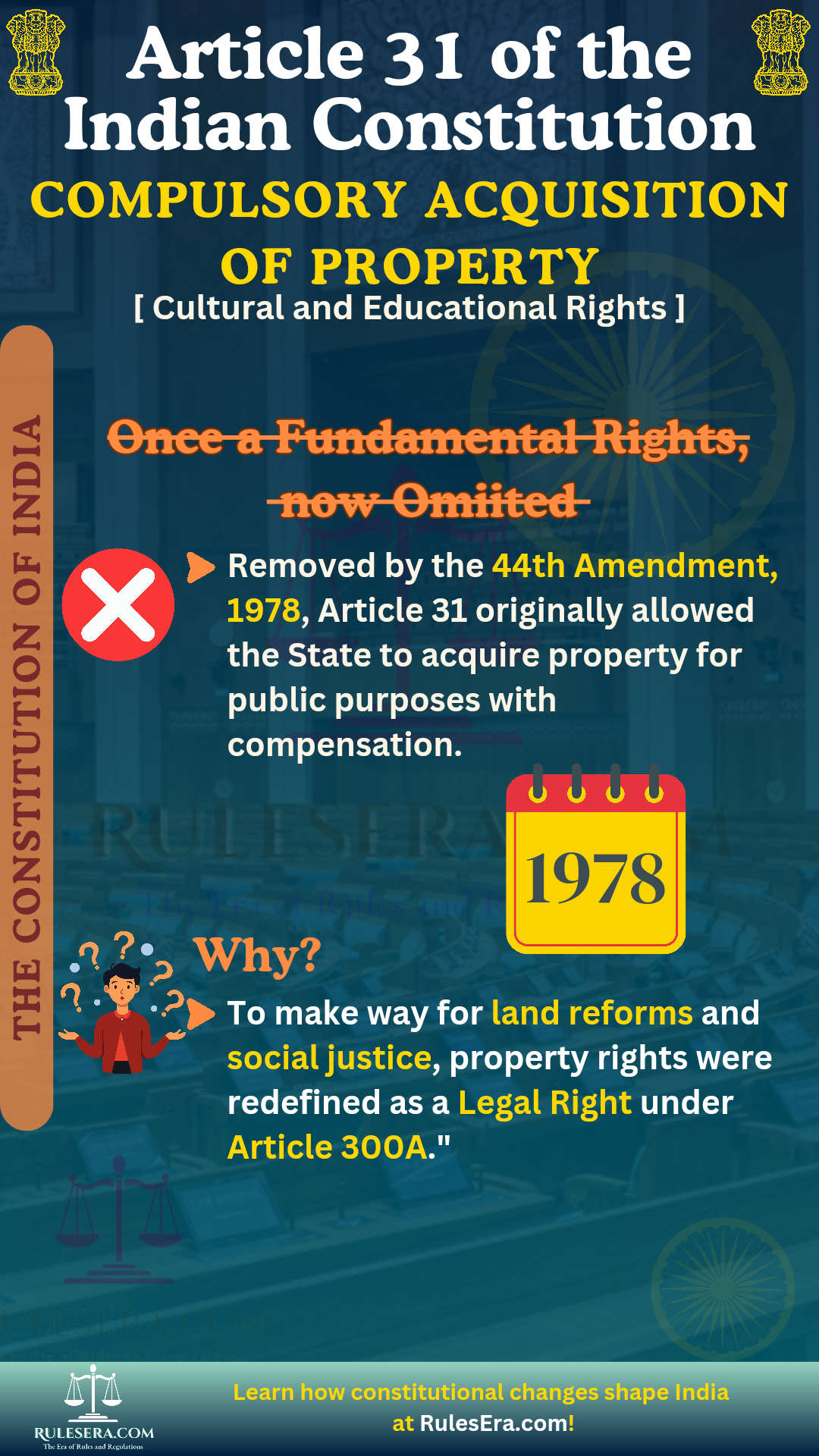Part III: Fundamental Rights
Article 31: Compulsory Acquisition of Property (Omitted):: Culture and Educational Rights

Omitted by the Constitution (Forty-fourth Amendment) Act, 1978, s. 6 (w.e.f. 20-6-1979).
Explanation
Article 31 originally provided the framework for the state's compulsory acquisition of property, balancing individual property rights with public welfare needs. Its omission in 1978, with the Forty-fourth Amendment, reclassified the right to property as a legal right under Article 300A, reflecting a shift towards prioritizing socio-economic reforms over individual property rights.
Key Aspects of Article 31 (Before Omission)
- Right to Compensation: Initially, Article 31 mandated fair compensation for acquired property, ensuring state acquisition was just.
- Transition to Legal Right: With its omission, property rights moved from fundamental to legal rights, allowing for progressive land reforms.
Real-Life Applications
The Forty-fourth Amendment, which removed Article 31, enabled large-scale land reforms. This change facilitated government initiatives to redistribute land and address socio-economic inequalities, as seen in various land redistribution programs in states like West Bengal and Kerala.
Frequently Asked Questions (FAQs):
Article 31 was omitted to enable land reforms and socio-economic policies without the limitations imposed by property rights as fundamental rights, shifting them to legal rights under Article 300A.
The right to property was redefined as a legal right under Article 300A, allowing the government to prioritize public welfare over individual property claims.